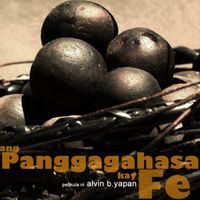Cinemalaya: A Unique Combination Of A Production Workshop And A Film Festival
The third edition of Cinemalaya Festival took place in Manila from 20 to 29 July this year. Seen from the exterior, the event is a festival dedicated to independent Filipino films. But it is much more than a simple festival.
Organized by a foundation led by the filmmaker Laurice Guillen, Cinemalaya is first of all a script-writing contest open to young Filipinos who want to make movies. A dozen projects are selected each year by a committee of professionals – including Robbie Tan, producer of Foster Child (Brillante Mendoza) and The Bet Collector (Jeffrey Jeturian).
Each receives 9,000 euro to be able to shoot a digital film (DV or HDV format). These films are then presented in a competition during Cinemalaya Festival, which also offers other exclusively Filipino and never-seen-before works. All in all, two hundred films are screened in six theatres during nine days.
What is remarkable about the event was the number of spectators who come to the Cultural Center of the Philippines (CCP). All the screenings were sold out. The location is of importance: thanks to its status as a cultural enclave, this imposing building, built by Marcos in the late 1960s on the old city’s bay, enables the organizers to freely select their films and screenings without having to worry about the cinematographic censorship authorities.
Script writing competition and festival: this conjunction has already given birth to the talented filmmaker, Auraeus Solito, who, thanks to this script contest, could make his first film, The Blossoming of Maximo Oliveros. This film and his second one, Tuli, were both invited to the Berlin International Film Festival. This year, he presented Philippine Science in world premiere at Cinemalaya.
| Script writing competition and festival: this conjunction has already given birth to the talented filmmaker, Auraeus Solito, who, thanks to this script contest, could make his first film, The Blossoming of Maximo Oliveros. This film and his second one, Tuli, were both invited to the Berlin International Film Festival. This year, he presented Philippine Science in world premiere at Cinemalaya. |
European
The second surprise: The overall quality of the selected films was way above expectation.
It seemed that a good half of the eight selected feature films would easily find their way to international festivals. Philippine Science, the title of which refers to the National School of Science, is of course one of them. Solito’s third work is a remarkable film about nostalgia that combines a teenage chronicle in a school setting, the history of an institution (a famous school) and the history of this turbulent country. One can see between the lines references to the political struggles that led to the fall of the Marcos dictatorship.
| There were also two remarkable first films. Directed by Jim Libiran, a former television reporter who covered numerous conflict areas, Tribu follows the confrontation between street gangs within a limited period of time (two nights and a day) and place (Tondo, a slum situated north of Manila) through the viewpoint of a child. The film also portrays the daily life of the Tondo inhabitants, whose everyday is a survival. With a style close to documentary filmmaking – most notably in the startling religious procession sequence – Tribu displays a raw energy, void of any sensationalism. |  |
It is also worth talking about Endo by Jade Castro. The film tackles the precarious situation of short-term workers who are obliged to change their job every five months because their employers offer them only short-term contracts to avoid paying any social benefits.
Although inscribing itself within the codes of Asian romantic comedies – the love games of two fast food restaurant employees – the film slides towards political terrain by tackling their disillusionment about a country with social inequalities that are quite repellent.
Whereas in other countries, such as Malaysia, filmmakers who shoot in DV are quietly distributed, their Filipino counterparts sometimes benefit from commercial distribution in the archipelago, and some of them enjoy a commercial success (Maximo Oliveiros being the flag example).
| The young generation of Filipino filmmakers are starting to attract interests from prestigious film festivals. This year’s Cinemalaya films have already been invited to several international festivals: Locarno (Kadin by Adolf Alix Jr, also this year’s Philippine entry to the Academy Awards) and Pusan (Tribu, Philippines Science) to mention a few. Berlin will also screen several films from the Philippines next year, and we can bet with assurance that Filipino cinema will be a favourite and a highlight in several film festivals next year. |  |
Thanks to the initiatives of Cinemalaya, which enable young filmmakers to shoot “malaya” (“free” in Tagalog) of any constraints, the desire to make popular (in the word’s both meanings) and engaged films is becoming the trademark of the young Filipino cinema.
Similar content
By Jérémy Segay
08 Aug 2007
from - to
15 Jul 2011 - 24 Jul 2011
posted on
12 Jun 2011
By Kerrine Goh
30 Sep 2009


